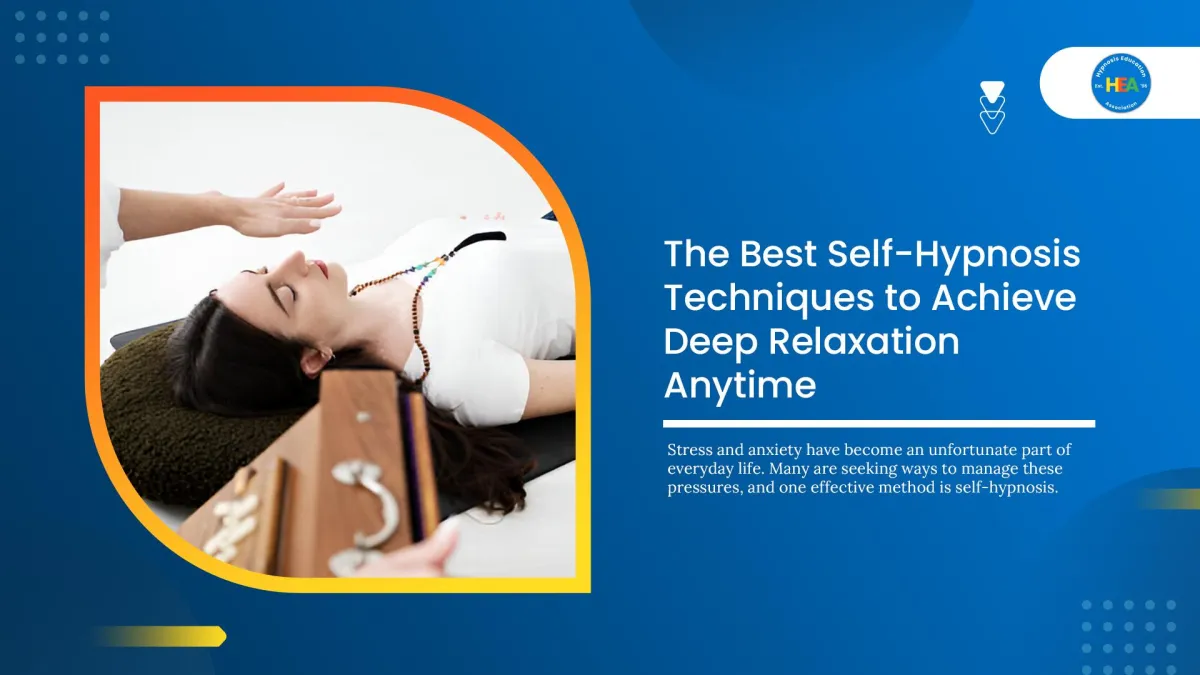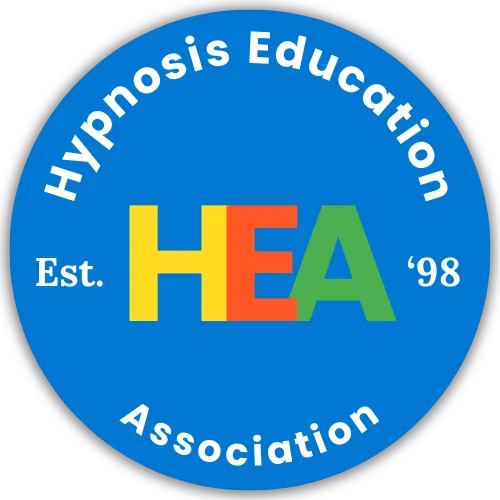
The Best Self-Hypnosis Techniques to Achieve Deep Relaxation
The Best Self-Hypnosis Techniques to Achieve Deep Relaxation Anytime
Stress and anxiety have become an unfortunate part of everyday life. Many are seeking ways to manage these pressures, and one effective method is self-hypnosis. Known for its ability to promote deep relaxation and alleviate anxiety, self-hypnosis techniques are becoming increasingly popular for those looking to improve mental health and overall well-being.
We’ll explore the most effective self-hypnosis techniques that you can use to achieve deep relaxation anytime. Whether you're dealing with anxiety, sleep issues, or simply seeking a way to unwind after a long day, self-hypnosis offers a versatile and accessible tool for your mental and emotional health.
What is Self-Hypnosis?
Self-hypnosis is a form of guided meditation where you enter a deeply relaxed state of mind to create positive changes in your thoughts, emotions, and behaviors. Unlike traditional hypnosis, where a hypnotherapist leads the session, self-hypnosis techniques empower you to guide yourself into a relaxed state. The ultimate goal is to access your subconscious mind, where you can release negative thoughts and promote relaxation, calmness, and healing.
If you're interested in learning more about the power of self-hypnosis, consider exploring hypnosis education opportunities to deepen your understanding of how hypnosis can support your mental health journey.
Why Choose Self-Hypnosis?
One of the main reasons people turn to self-hypnosis for relaxation is its simplicity and accessibility. Unlike other relaxation techniques that may require special equipment or a dedicated instructor, self-hypnosis can be done anywhere, at any time. All you need is a quiet space, a few minutes, and an open mind.
Additionally, self-hypnosis has been scientifically proven to be effective for a variety of mental and physical conditions, including anxiety, stress, and sleep disorders. Whether you are looking to manage your day-to-day stress, improve your sleep quality, or find relief from chronic anxiety, self-hypnosis techniques can provide a solution tailored to your needs.
For those looking to dive deeper into the conferences on hypnosis or even hypnotherapy training, there are plenty of opportunities to expand your knowledge.
How Does Self-Hypnosis Work?
At its core, self-hypnosis works by focusing your attention inward, allowing you to bypass the conscious mind and communicate directly with your subconscious. During a session, you will enter a state of deep relaxation where your mind becomes highly suggestible. In this state, you can use positive affirmations, guided imagery, or specific suggestions to bring about desired changes in your behavior or emotional state.
For example, you can use self-hypnosis for anxiety by focusing on calming imagery and repeating affirmations that promote peace and calm. Likewise, self-hypnosis for sleep can involve visualizing a serene environment and reinforcing the belief that you will fall asleep quickly and easily.
Benefits of Self-Hypnosis
Improved Sleep Quality: Practicing self-hypnosis for sleep can help those who struggle with insomnia or have difficulty winding down at night. By entering a deeply relaxed state, you can ease both your body and mind into a restful sleep.
Reduced Anxiety: Self-hypnosis offers a powerful way to manage anxiety. Through relaxation techniques and positive affirmations, self-hypnosis for anxiety can help break the cycle of worry and stress.
Enhanced Relaxation: One of the greatest advantages of self-hypnosis for relaxation is its ability to promote a deep sense of peace and calm, even in the midst of a busy or stressful day.
Empowerment: The ability to hypnotize yourself whenever you need is an empowering tool that places the control of your mental well-being in your hands.
If you're looking to start a career in this field, explore how to start a career in hypnosis or become a hypnotherapist for more guidance.
The Best Self-Hypnosis Techniques for Deep Relaxation
Now that you understand the fundamentals of self-hypnosis, let's explore some of the best self-hypnosis techniques that you can use to achieve deep relaxation.
1. Breathing Technique for Instant Calm
This technique is a simple yet highly effective way to enter a state of deep relaxation. Start by sitting or lying down in a comfortable position. Take a few deep breaths, inhaling slowly through your nose and exhaling through your mouth. As you breathe in, imagine drawing in relaxation, and as you breathe out, visualize releasing any tension or stress.
Continue this breathing pattern while mentally repeating a phrase like, “I am calm, I am at peace.” After several minutes, you should feel your body and mind starting to relax. This self-hypnosis for relaxation technique is excellent for calming your nerves in moments of stress or anxiety.
2. Progressive Muscle Relaxation
This technique involves tensing and relaxing different muscle groups in your body to promote deep relaxation. Begin by finding a comfortable position and focusing on your breath. Starting from your toes, tense each muscle group (feet, legs, abdomen, arms, etc.) for a few seconds, and then release, feeling the tension melt away.
As you move through each part of your body, you’ll notice a profound sense of relaxation. This is one of the most effective self-hypnosis techniques for releasing physical tension and achieving mental calm.
3. Visualization for Relaxation and Sleep
Visualization is a key component of self-hypnosis for sleep and self-hypnosis for relaxation. Start by closing your eyes and imagining yourself in a peaceful setting, such as a beach, a forest, or anywhere you feel calm and safe. Focus on the details of your surroundings—what do you hear, see, or smell?
As you immerse yourself in this mental environment, allow your body to relax further. You can also introduce affirmations like, “I am relaxed, I am ready to sleep.” Visualization is a powerful way to calm the mind, making it particularly useful for individuals struggling with anxiety or insomnia.
4. Guided Self-Hypnosis Recordings
Guided Self-Hypnosis Recordings If you’re new to self-hypnosis, using guided recordings can be incredibly helpful. There are many online resources offering self-hypnosis sessions designed for relaxation, sleep, or anxiety relief. A good starting point would be checking out some self-hypnosis resources.
5. Affirmation Repetition Technique
Affirmations are positive statements that you repeat to yourself during a hypnotic state. For example, you can use phrases like, “I am calm and relaxed,” or “I am in control of my thoughts and emotions.” Repeating these affirmations during self-hypnosis for anxiety helps to reinforce positive thinking patterns and reduce stress.
To practice this technique, enter a relaxed state through breathing exercises or visualization. Once you feel calm, begin repeating your chosen affirmations slowly and deliberately. Over time, these affirmations will become deeply ingrained in your subconscious mind, promoting lasting relaxation and stress relief.
Using Self-Hypnosis to Manage Anxiety and Sleep Problems
One of the most common reasons people turn to self-hypnosis techniques is to manage anxiety and sleep disorders. Chronic stress can make it difficult to fall asleep or stay asleep, and ongoing anxiety can affect your overall well-being. Fortunately, self-hypnosis for sleep and self-hypnosis for anxiety can provide relief from these issues.
Self-Hypnosis for Anxiety
When dealing with anxiety, self-hypnosis can help you regain control over your thoughts and emotions. During a self-hypnosis session, you can guide yourself through relaxation techniques and use affirmations to reframe negative thoughts. For example, if you are feeling overwhelmed by worry, use affirmations like “I am safe,” “I trust myself,” or “I release my fears.”
Regular practice of self-hypnosis for anxiety can help you feel more grounded, centered, and in control during stressful situations.
Self-Hypnosis for Sleep
Struggling with sleep can have a serious impact on your physical and mental health. Self-hypnosis for sleep helps create a bedtime ritual that promotes relaxation and a calm mind. Techniques like progressive muscle relaxation and guided imagery can help you fall asleep more quickly and stay asleep through the night.
To use self-hypnosis for sleep, establish a routine where you practice relaxation exercises before bed. Focus on creating a calm environment, either through visualization or by listening to a guided hypnosis recording specifically designed for sleep.
Conclusion
Incorporating self-hypnosis techniques into your daily routine can have a profound effect on your mental and emotional well-being. Whether you're looking to manage anxiety, improve your sleep quality, or simply find a moment of peace during a busy day, self-hypnosis offers a powerful, accessible tool for relaxation and healing.
By practicing self-hypnosis for relaxation regularly, you’ll learn how to enter a deeply relaxed state anytime you need, empowering you to take control of your mental health. With the right techniques and a commitment to regular practice, self-hypnosis can become a lifelong tool for achieving balance and calm.
If you’d like to learn more or start practicing these techniques, feel free to contact us, and we'll be happy to assist you on your journey to deep relaxation.
